Ho Chi Minh Square and Uncle Ho's statue - where the image of him returning to his hometown is recreated
(Baonghean.vn) - Those who have been to Vinh city and Nghe An province must know about Ho Chi Minh Square and Uncle Ho's statue - a special highlight in the landscape of the central city of the North Central region...
Ho Chi Minh Square and Uncle Ho's statue are not only special works of politics, culture and architecture, but have truly become a beautiful symbol of the people, culture and land of Nghe An. This is also one of the red addresses to educate love for the homeland, for generations of cadres, party members and people to study and follow the example, morality and style of Ho Chi Minh in his homeland.
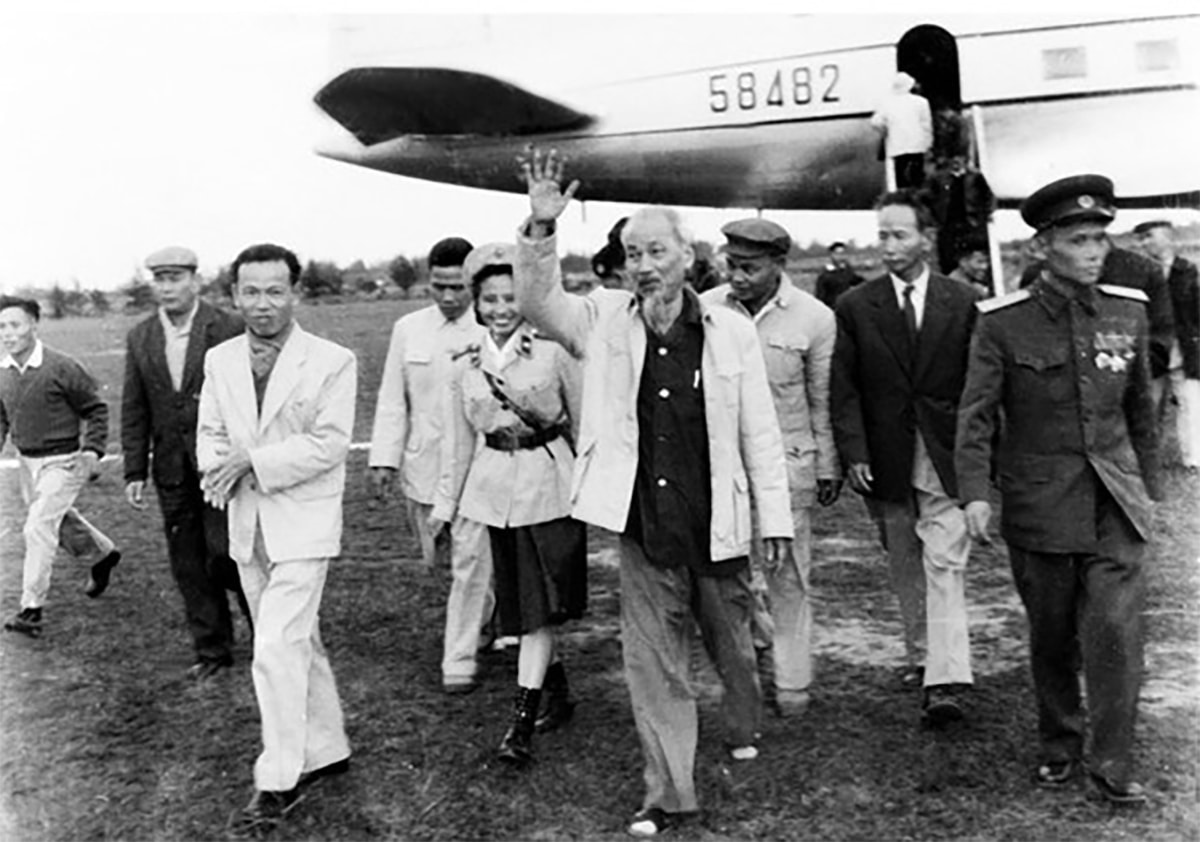 |
| Welcoming Uncle Ho at Vinh airport. Photo: Document |
And perhaps not many people know that the statue is a special work of art recreating the image of Uncle Ho visiting his hometown. With the theme: "Uncle Ho with his homeland - homeland with Uncle" - author Do Nhu Can and the artisans were very talented in expressing his thoughts and feelings for his homeland. Although the material used was stone, under the talented hands of the artisans and architects, Uncle Ho appeared with warm, familiar and simple features. In front of the Uncle Ho Monument, we have the feeling that he is still standing in front of his familiar house in his maternal hometown Hoang Tru, visiting the Vinh Thanh rice fields (Yen Thanh), chatting with the staff and workers of Vinh Power Plant, or visiting the soldiers of the armed forces of Military Region 4...
Having devoted his whole life to the revolution and the cause of liberating his homeland and country, President Ho Chi Minh only visited his hometown twice.The first time he visited his hometownIt was June 1957 - 50 years after Uncle Ho left his homeland to travel and find a way to save the country. In a choked up emotion of both joy and sadness, Uncle Ho said:"Homeland is a place of great love and affection/Those fifty years have been filled with so much love."
During the timeUncle returned to his hometown for the second timeOn December 8, 1961, when visiting the cadres and workers of Vinh Mechanical Factory (now under the jurisdiction of Road Department II), Uncle Ho advised:“When producing machinery and tools, workers must ensure that farmers have time to use them. If not, they must repair them for farmers. They must do well the four words "many, fast, good, cheap".Visiting and talking with teachers and students of Nghe An Mountainous Pedagogical High School, he advised:“I advise you to study well. What is good study? Good study means that politics and culture are closely linked to labor production, not just studying for long periods of time. The purpose is to make economic, political and cultural progress, and to unite all ethnic groups. What is the point of studying? To build socialism, and what is socialism? - to be well-off.”Uncle Ho visited the cadres and workers of Dong Hieu Farm; visited and talked with members of the Vinh Thanh Senior Cooperative (Yen Thanh), or talked with cadres and people of Kim Lien and Nam Dan communes... Wherever he went, he left simple yet profound, rustic yet noble impressions of a shining example of Ho Chi Minh's ideology and morality. Deep in the hearts of generations of cadres, party members, and people of Nghe An from the plains, cities to the mountains, highlands,... the memories of the day Uncle Ho visited his homeland have long become a sacred heritage - a source of invaluable spiritual strength.
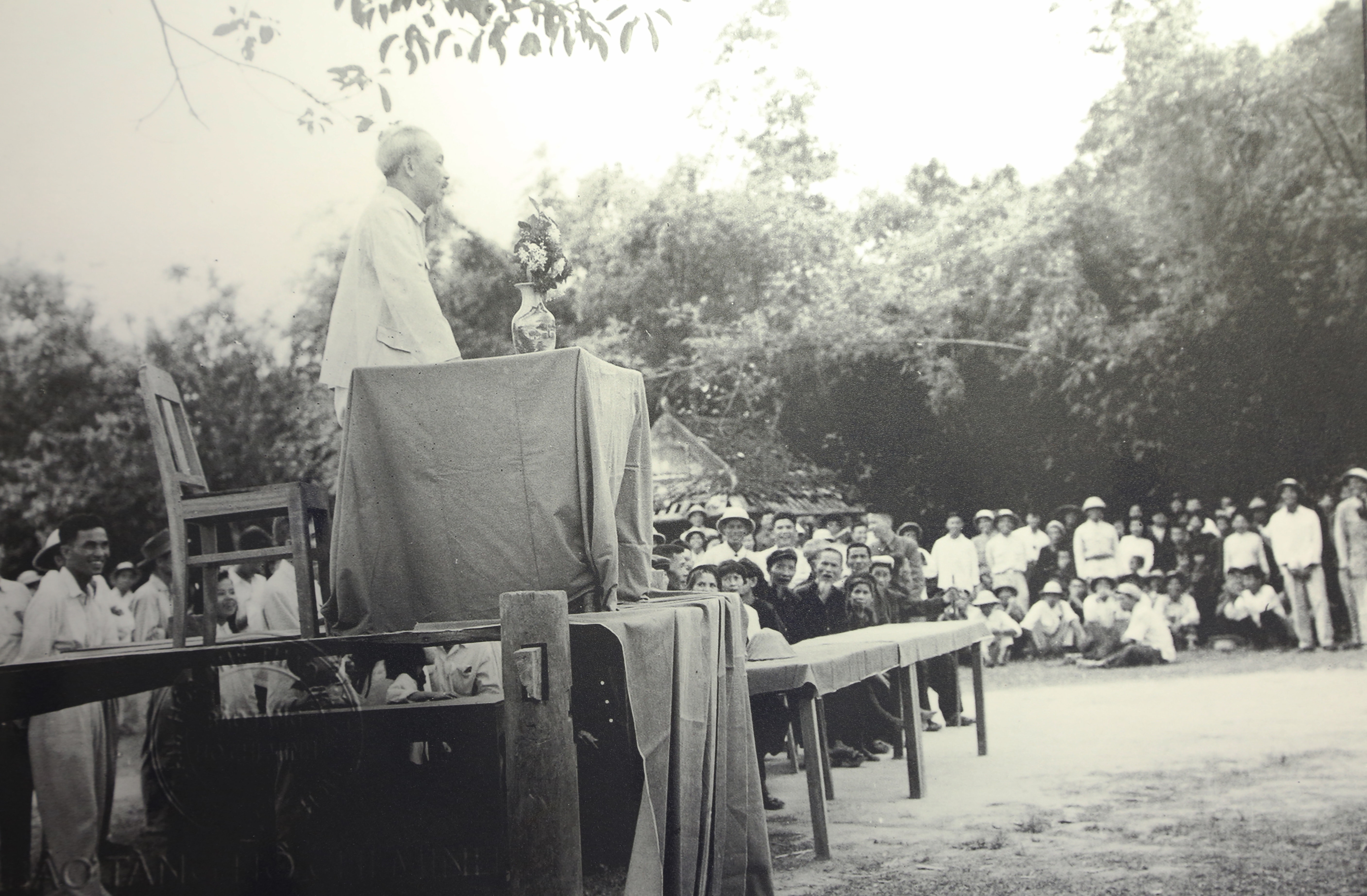 |
| President Ho Chi Minh talks with the people of Nam Lien commune (Nam Dan). Photo: Document |
Although his stay in his homeland was not long, Uncle Ho was always concerned and worried about the lives of the people. This was clearly shown in every word he told cadres and party members: “The people do not have enough salt, the Party must worry. The people do not have enough rice to eat, the people do not have enough warm clothes to wear, the Party must worry. The children do not have schools, the Party must worry!”
As President, despite being busy with a thousand and one things, Uncle Ho's love, longing and concern for his homeland were always in his heart day and night. He conveyed this through letters and articles sent to his homeland. In his last letter to the Nghe An Provincial Party Committee on July 21, 1969, Uncle Ho wrote:“Nghe An is a large province with rich resources and hard-working and revolutionary people. We hope that our compatriots and comrades will strive to make Nghe An one of the most prosperous provinces in the North.”
The great achievements that the Party Committee and People of Nghe An have achieved in the construction and development over the past 60 years (1961 - 2021) are not just simple statistics and reports, but they are the promises, determination and creativity of generations of cadres, party members, youth union members and the masses of all classes of people respectfully offered to Him.
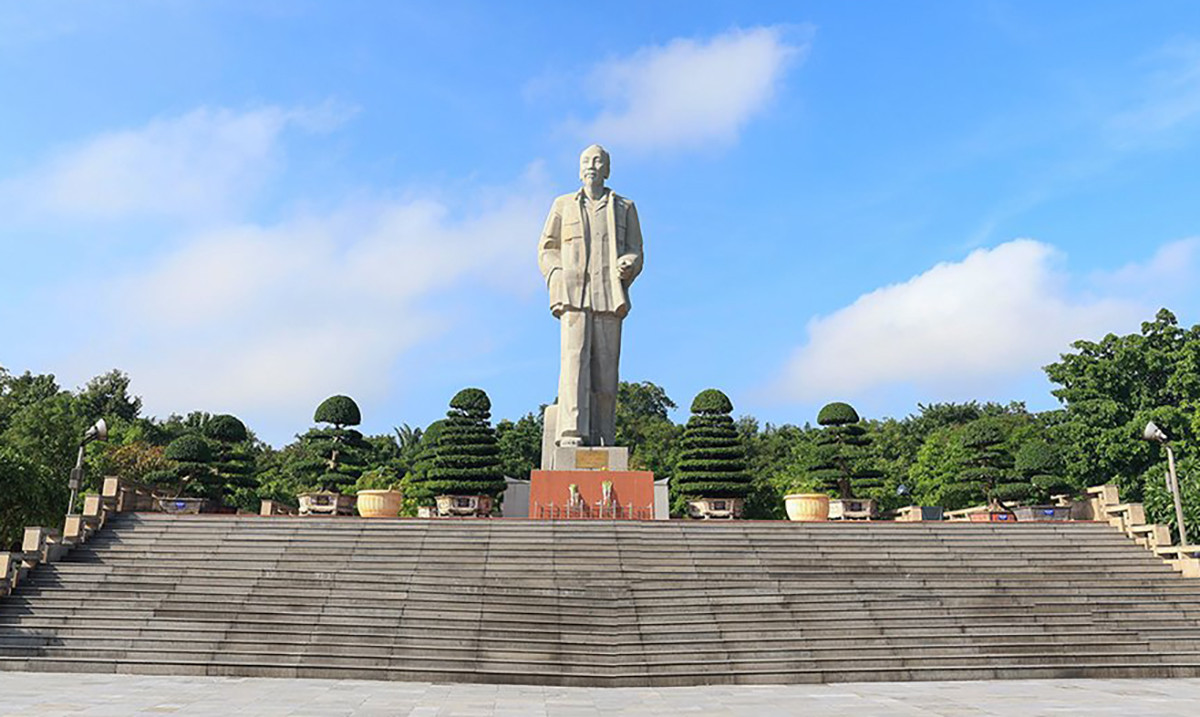 |
| Uncle Ho's statue at Ho Chi Minh Square. |
Responding to the earnest wishes of cadres, party members, and people of Nghe An province in particular and the whole country in general, the Politburo and the Central Party Secretariat agreed to the policy of building Ho Chi Minh Square and Uncle Ho's statue in Vinh city. On May 19, 2000, on the occasion of the 110th anniversary of President Ho Chi Minh's birthday, this special project was officially started...
In 2003, after 3 years of construction, with great efforts of the Provincial Party Standing Committee, the Provincial Party Executive Committee of Nghe An, the Project Management Board and the participating construction units, the ProjectHo Chi Minh Squareand the monument named after him has been completed. The project consists of 26 important items. The Uncle Ho monument is made of white granite from Binh Dinh - a type of eternal stone, 18m high, (of which the statue body is 12m, the base and pedestal are 6m). The statue is assembled from 9 panels, formed by 32 stone slabs, weighing nearly 300 tons but still exudes elegance, softness and warmth after two visits to his homeland.
In the center of the Square are 99 grass squares designed like Ba Dinh Square, creating a cool green color and limiting the heat of Nghe An summer, and also a place for every Vietnamese person to gather with Uncle Ho. According to Eastern beliefs, the number 99 symbolizes sustainability and eternity. Surrounding the grass squares are rows of tall trees, creating a harmonious and friendly space.
 |
| Ho Chi Minh Square and Uncle Ho statue. |
Behind the Uncle Ho statue is Chung Mountain. This is an artificial mountain modeled after Chung Mountain in Kim Lien (Nam Dan) - a national historical and cultural relic, where in his childhood, the boy Nguyen Sinh Cung and his friends played tug of war, flew kites, and fought mock battles. The mountain has 3 peaks forming an arc like a mother's arms embracing and protecting, creating a solid support for the Uncle Ho statue, at the same time expressing the love of the homeland always towards him. On the simulated Chung Mountain, there are many precious trees planted by cadres and people from all over the country as well as international friends during their visits.
On May 19, 2003, on the occasion of the 113th anniversary of Uncle Ho's birthday, the inauguration ceremony of Ho Chi Minh Square and Uncle Ho's statue took place in conjunction with the National Lotus Village Festival. Nearly 20 years after its completion, Ho Chi Minh Square and Uncle Ho's statue became the venue for many important political, economic and cultural events in Nghe An as well as the whole country. Here, on the evening of January 31, 2015, Nghe An and Ha Tinh provinces were honored to receive the Certificate of recognition of Nghe Tinh Vi and Giam folk songs as a representative intangible cultural heritage of humanity by UNESCO. Many important festivals also took place here such as: National Lotus Village Singing; commemorating the 990th anniversary of the name Nghe An (2020)... and more importantly, Ho Chi Minh Square and Uncle Ho's statue are the destination for millions of children and grandchildren from all 63 provinces and cities to gather with Uncle Ho, to live in the happiness and peace that he sacrificed his entire life to give to the people, the country and the homeland./.

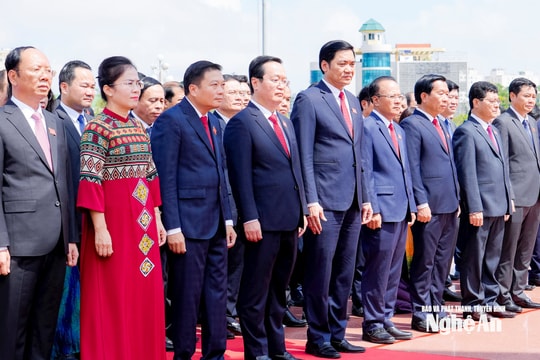
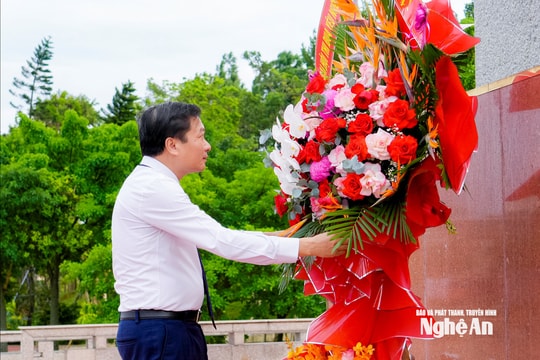
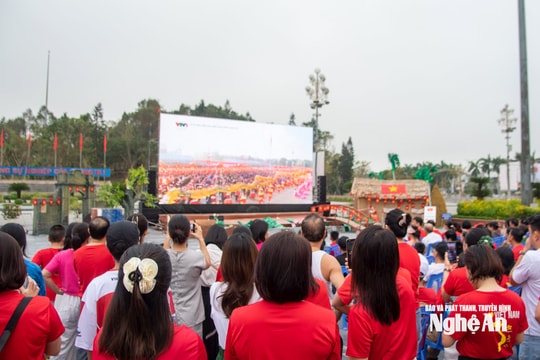
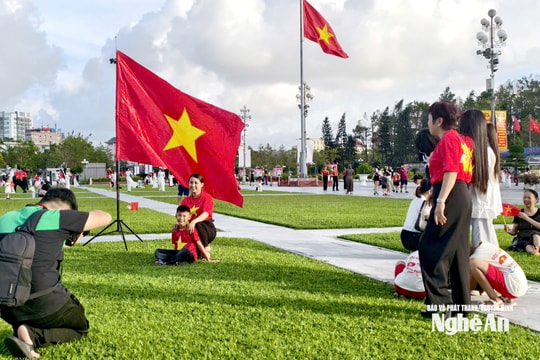
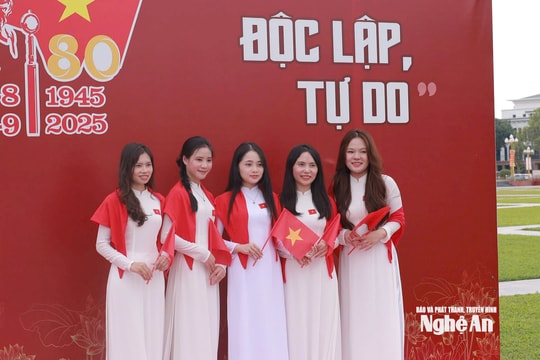
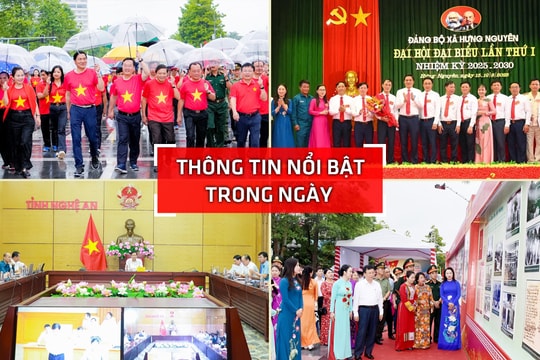
.jpg)
